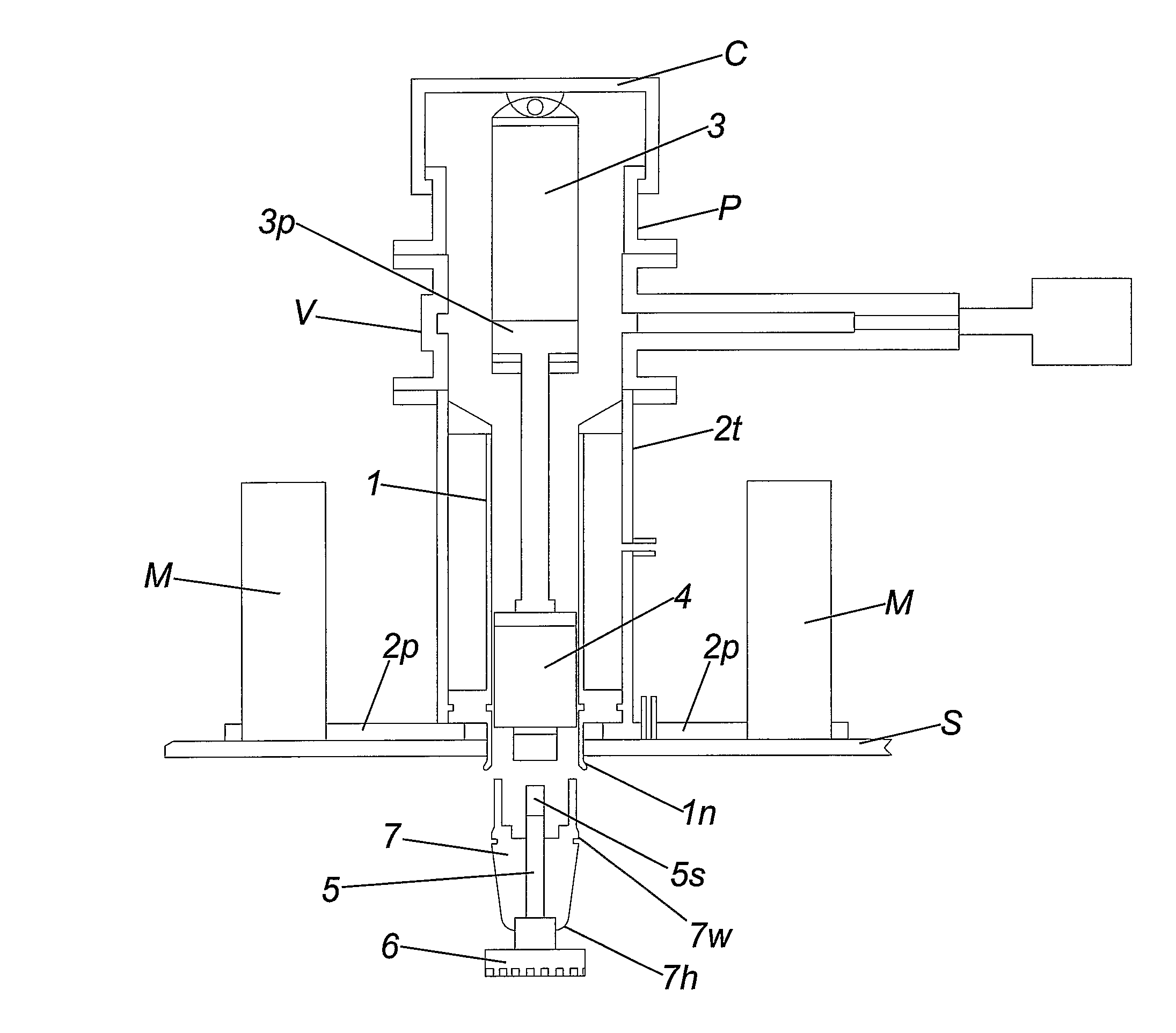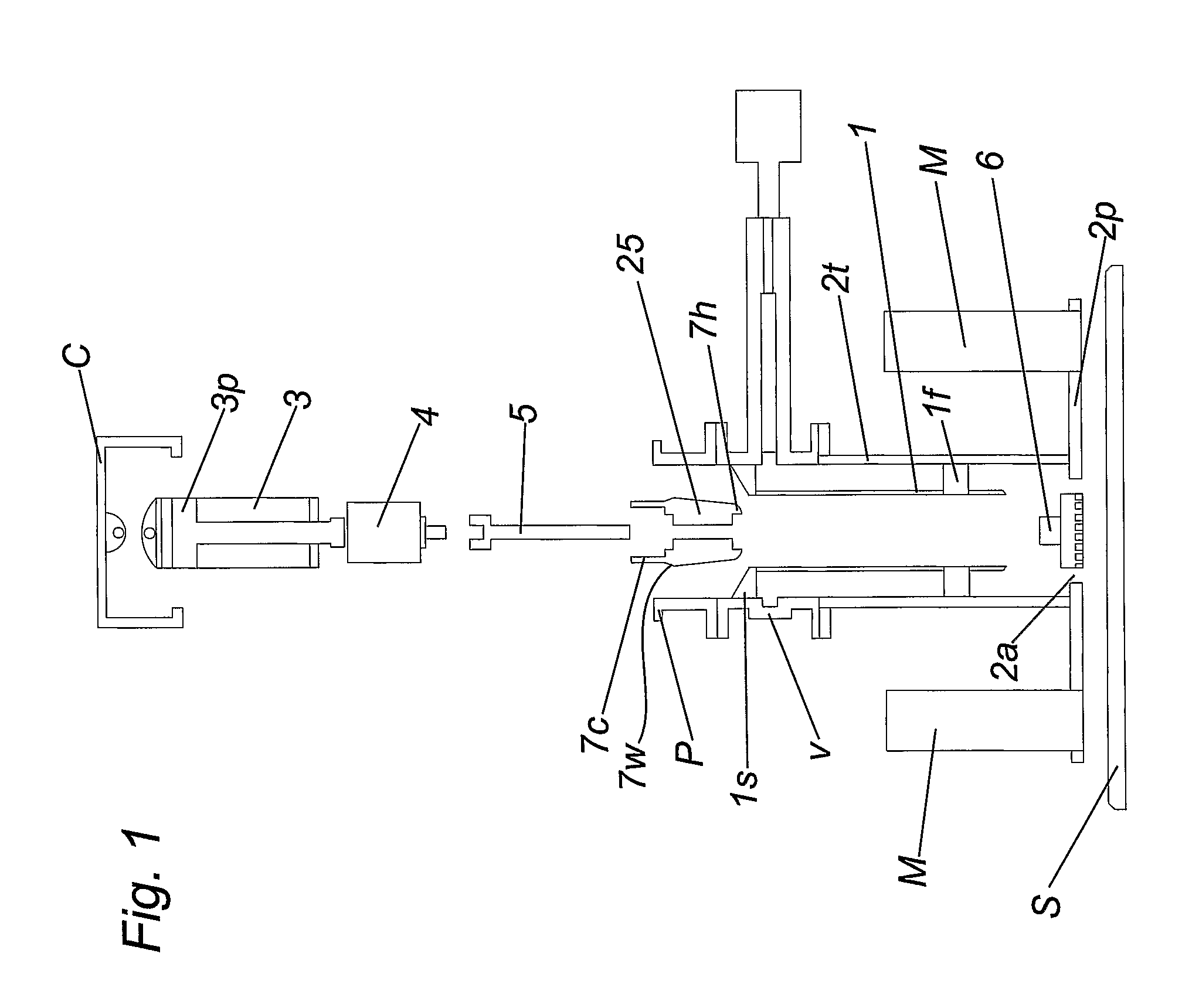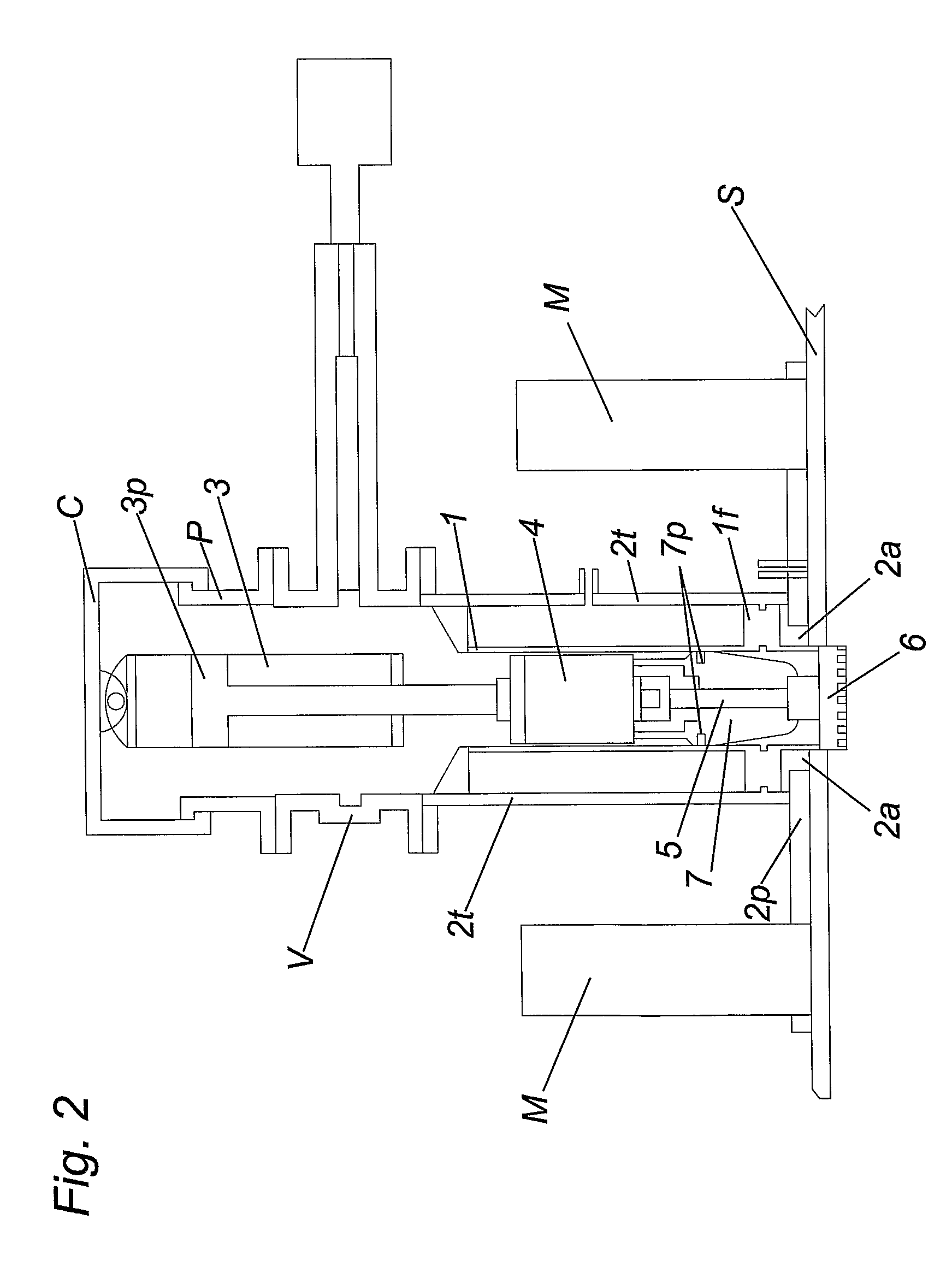Method and apparatus for securing a conduit to a structure
a technology of conduits and structures, applied in the direction of liquid bottling, vehicles/pulleys, ropes and cables, etc., can solve the problems of uncontrollable manner, risky current process, environmental damage, etc., and achieve the effect of less operator skills, less risk to operating personnel, and convenient us
- Summary
- Abstract
- Description
- Claims
- Application Information
AI Technical Summary
Benefits of technology
Problems solved by technology
Method used
Image
Examples
first embodiment
[0076]Referring now to the drawings, FIG. 1 shows a first embodiment for attaching a conduit to a structure S. In the FIG. 1 exploded view, the conduit comprises a cylindrical pipe 1 having an external flange 1f that is spaced from one distal end. As best shown in FIGS. 5 and 6, the apparatus for attaching the pipe 1 comprises a guide plate 2p that is flat and rectangular, and a guide tube 2t with a hollow bore that extends perpendicularly from the upper face of the guide plate 2p. The guide tube 2t is welded to the guide plate 2p, and is co-axial with and surrounds a central aperture 2a in the guide plate 2p which is slightly narrower than the bore of the guide tube 2t, so that a radially extending lip is formed between the aperture 2a and the lower face of the tube 2t. The bore of the guide tube 2t and the aperture 2a are coaxial.
[0077]The upper end of the guide tube 2t is flanged to accept a valve housing V carrying a valve that is adapted to close the bore of the valve housing V...
seventh embodiment
[0117]Referring now to FIGS. 34-48, a seventh embodiment is particularly useful for attaching a conduit to a structure having two skins, an outer skin, such as an outer wall of a ship's hull S1, and an inner skin, such as an oil tank S2, which is spaced from the outer hull S1, and which contains the fluid (e.g. oil) to be recovered. Normally the space between the outer and inner hulls in such ships is around 1m, but it is not a constant factor. In the FIG. 34 view, the conduit comprises a cylindrical pipe 71 having an external flange 71f that is spaced from one distal end, and a guide plate 72 similar to earlier embodiments. The guide plate 72 having a guide tube 72t has annular seals on its inner surfaces at 72s, and is adapted to attach temporarily to the hull S1 via magnets or other connections as previously described.
[0118]The upper end of the guide plate 72 is open to accept the pipe 71 and connect it to the structure S1 and S2.
[0119]The pipe 71 is a tight fit within the bore o...
PUM
| Property | Measurement | Unit |
|---|---|---|
| diameter | aaaaa | aaaaa |
| dimension | aaaaa | aaaaa |
| inner circumference | aaaaa | aaaaa |
Abstract
Description
Claims
Application Information
 Login to View More
Login to View More - R&D
- Intellectual Property
- Life Sciences
- Materials
- Tech Scout
- Unparalleled Data Quality
- Higher Quality Content
- 60% Fewer Hallucinations
Browse by: Latest US Patents, China's latest patents, Technical Efficacy Thesaurus, Application Domain, Technology Topic, Popular Technical Reports.
© 2025 PatSnap. All rights reserved.Legal|Privacy policy|Modern Slavery Act Transparency Statement|Sitemap|About US| Contact US: help@patsnap.com



